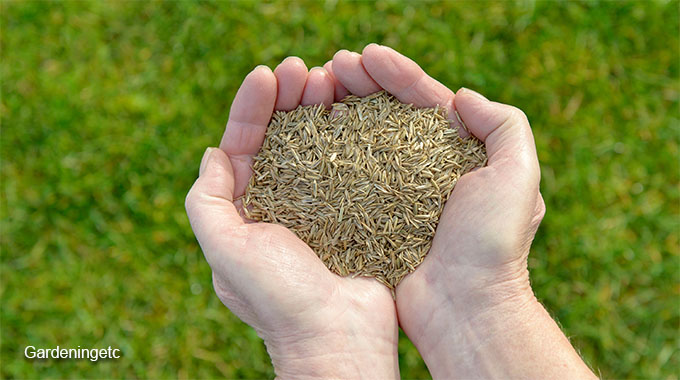Learning how to sow grass seeds is a necessity for most homeowners. Whether it’s to fill up that ugly hole in your lawn or install a whole new lawn in a bare area, planting grass goes a long way in making your compound look great. This article offers seven simple steps on how to plant grass seeds using lawn feed and other steps.
Choosing the right grass seed
There are thousands of grass types you could grow on your lawn. Different kinds of grass grow best in different kinds of climates. Some grasses grow better in warm-seasons and some better in cooler seasons. You can check the label of the package for more information and select the grass type suited for your climate. If you’re planting in the cool season, choose bentgrass, bluegrass, or ryegrass. If it’s a warm season, choose Bermuda, centipede, or carpet grass.
5 steps on how to sow grass seed
1. Prepare the ground
First, remove the dead grass, weeds, thatch, or moss on your lawn using a hoe or rake. Secondly, remove an area of about 5 to 8 cm with a shovel or trowel. Loosen the soil and turn it over for aeration. Smoothen the ground and make sure it is leveled. Rake the soil until it is finer and a smooth. Finally, water the area well to ensure emerging roots receive moisture and speed up the germination of the seeds.
2. Spread the seeds on the damp soil
Use your hand to distribute the seeds by flinging them over the area. Next, ensure the seeds are evenly spread throughout the surface at least 1 inch apart. This is to avoid competition when they grow.
3. Protect the seeds
After sowing, cover the seeds using mulch to protect them from birds, being washed away and to help them retain moisture. For mulch, you can use a straw, screened compost, or mushroom soil.
4. Water the seeds
Grass seeds that have just been planted need to be watered every day, especially if the weather is hotter than 27 degrees celsius. Once the grass is about 5 cm tall reduce the watering to about once or twice a week. When the grass is fully established stop watering it.
5. Feed the grass
After six weeks of sowing grass seed, add fertilizer to the grass so that the roots grow stronger. You can do this by hand or with a spreader. Ensure to select a lawn feed that is compatible with the type of grass you’ve grown.














